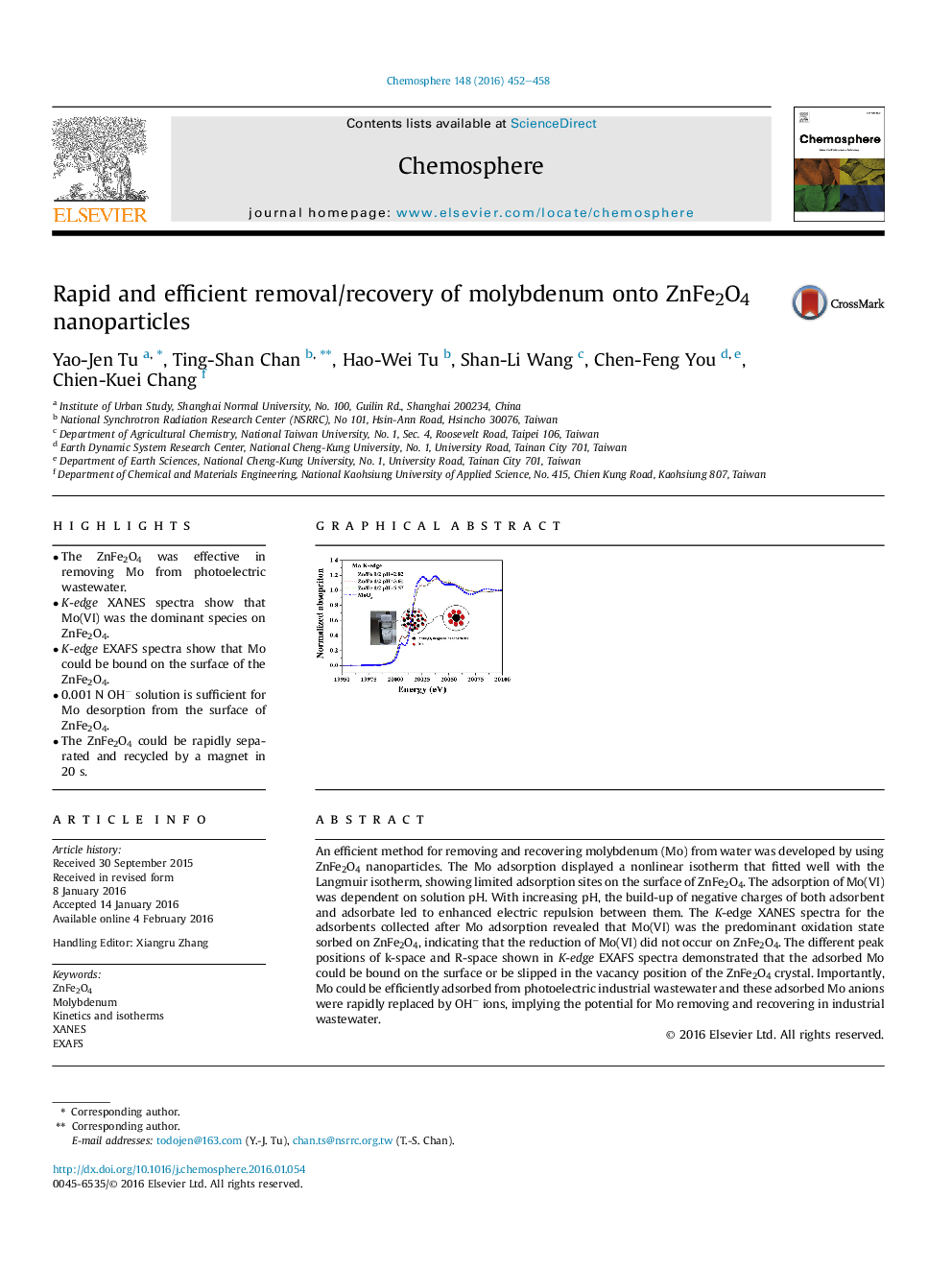| Article ID | Journal | Published Year | Pages | File Type |
|---|---|---|---|---|
| 4407865 | Chemosphere | 2016 | 7 Pages |
•The ZnFe2O4 was effective in removing Mo from photoelectric wastewater.•K-edge XANES spectra show that Mo(VI) was the dominant species on ZnFe2O4.•K-edge EXAFS spectra show that Mo could be bound on the surface of the ZnFe2O4.•0.001 N OH− solution is sufficient for Mo desorption from the surface of ZnFe2O4.•The ZnFe2O4 could be rapidly separated and recycled by a magnet in 20 s.
An efficient method for removing and recovering molybdenum (Mo) from water was developed by using ZnFe2O4 nanoparticles. The Mo adsorption displayed a nonlinear isotherm that fitted well with the Langmuir isotherm, showing limited adsorption sites on the surface of ZnFe2O4. The adsorption of Mo(VI) was dependent on solution pH. With increasing pH, the build-up of negative charges of both adsorbent and adsorbate led to enhanced electric repulsion between them. The K-edge XANES spectra for the adsorbents collected after Mo adsorption revealed that Mo(VI) was the predominant oxidation state sorbed on ZnFe2O4, indicating that the reduction of Mo(VI) did not occur on ZnFe2O4. The different peak positions of k-space and R-space shown in K-edge EXAFS spectra demonstrated that the adsorbed Mo could be bound on the surface or be slipped in the vacancy position of the ZnFe2O4 crystal. Importantly, Mo could be efficiently adsorbed from photoelectric industrial wastewater and these adsorbed Mo anions were rapidly replaced by OH− ions, implying the potential for Mo removing and recovering in industrial wastewater.
Graphical abstractFigure optionsDownload full-size imageDownload as PowerPoint slide
